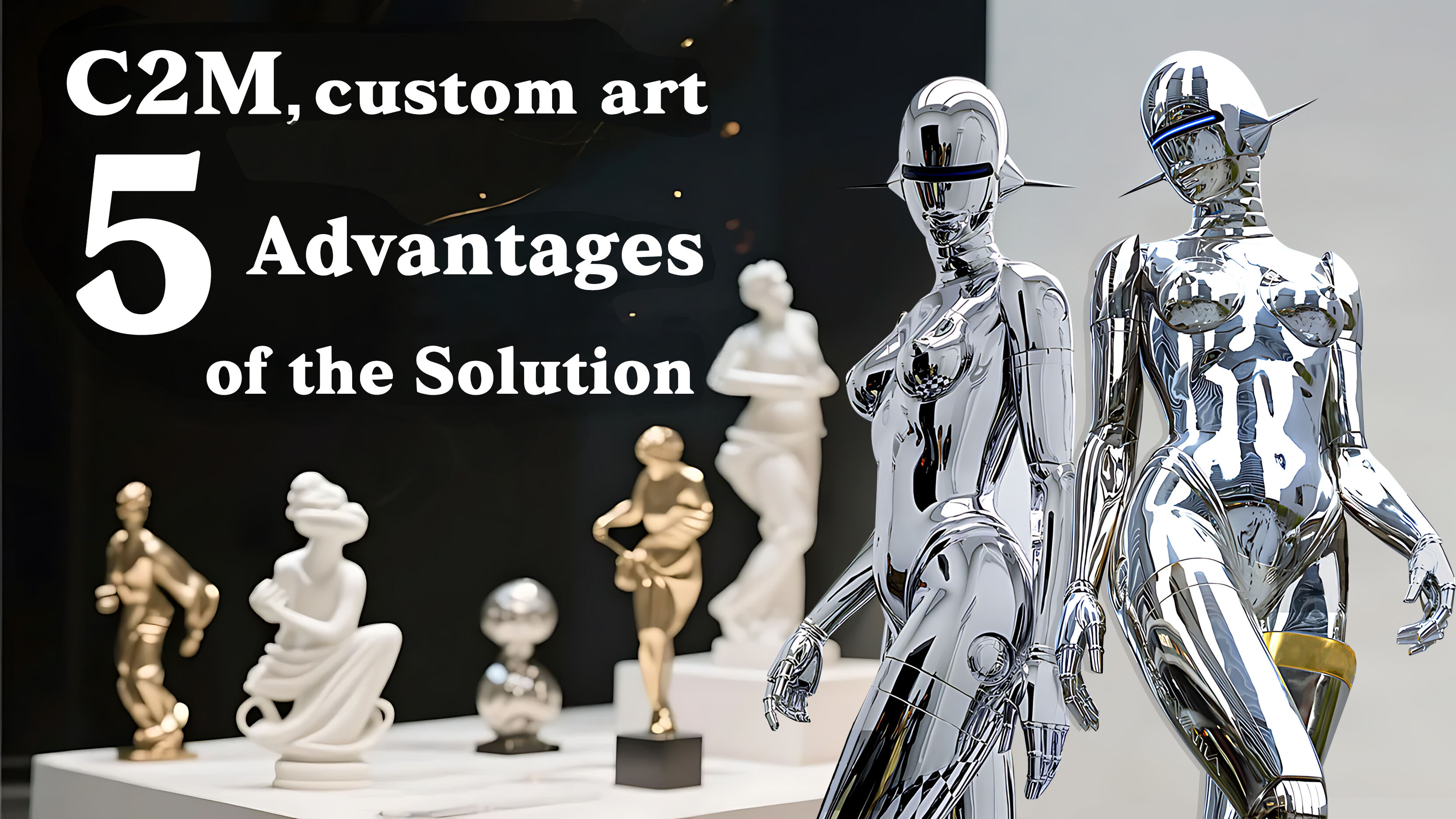Consumer-to-manufacturer (C2M) frameworks revolutionize value creation by bridging customer preferences directly into production workflows. This approach transforms buyers into active collaborators, enabling brands to translate niche aesthetic demands into viable products without compromising scalability.
Real-Time Feedback Loops in Collaborative Production
C Additive Manufacturing systems include customer feedback throughout the design process, instead of only during prototype testing. A manufacturing analysis of 2023 discovered that brands deployed on this model solved design conflicts 87% faster using an AI-based sentiment analysis of on client- submitted sketches and material preferences. This flexibility allows for up to 40% faster time-to-market for custom art installations compared to traditional methods.
Case Study: Premium Interior Design Partnerships
This collaboration with European artisans and a tech home decor platform reflects the scalability of C2M. Based on their input, such as spatial dimensions and style themes, via 3D configurators, on-demand ceramic tile was produced directly without employing overstock. Research shows similar partnerships delivered 7.4% annual revenue growth in premium markets by eliminating speculative inventory investments.
| Metric | Traditional Model | C2M Custom Art |
|---|---|---|
| Client revision cycles | 5.2 avg. | 1.8 avg. |
| Material waste per project | 22% | 9% |
| Repeat purchase intent | 34% | 67% |
This data-driven approach to customization minimizes production friction while maximizing perceived value—a critical advantage in luxury and limited-edition markets.
Streamlined Operations in C2M Custom Art Frameworks
C2M revolutionizes production efficiency by syncing creation with real-time demand signals. This framework replaces forecast-dependent models with agile response systems, eliminating overproduction risks. Production cycles compress from weeks to days by integrating digital proofing tools and automated workflow triggers. Manufacturers bypass warehousing costs entirely through direct-to-consumer fulfillment.
Just-in-Time Manufacturing Adaptation Strategies
C2M enables true on-demand fabrication where production starts only after order confirmation. Artists initiate workflows using cloud-based design interfaces while IoT sensors trigger machinery activation. This system slashes inventory overhead by 67% compared to traditional batch processing.
48% Waste Reduction in Prototyping Processes
Digital validation replaces physical sampling through AI-powered visualization tools. Customers adjust textures, sizes, and finishes in virtual galleries while manufacturers instantaneously calcify specifications. This cuts prototyping waste from six iterations to just 1.2 per project on average.
| Process | Traditional Reduction | C2M Framework Improvement |
|---|---|---|
| Material Procurement | 22% waste | 51% less overordering |
| Color Testing | 18 samples | 3 digital simulations |
| Revision Cycles | 8.7 average | 1.9 finalized mockups |
Dynamic Pricing Models Enabled by C2M Custom Art
Consumer-to-Manufacturer (C2M) frameworks transform pricing strategies by directly aligning production costs with real-time market demand.
Algorithmic Price Optimization for Limited Editions
Machine learning systems analyze four variables to determine optimal pricing:
- Scarcity indexing (edition size vs. collector demand)
- Production complexity metrics
- Historical sales patterns
- Geographic purchasing power disparities
A 2024 analysis of reactive pricing systems found platforms adjusting prices every 6-8 hours during product launches achieve 19% higher margins than static models.
| Traditional Art Commerce | C2M Custom Art Systems |
|---|---|
| 60-day price revision cycles | Real-time adjustments (<24hr latency) |
| 12-18% gross margins | 27-34% margin range |
Margin expansion stems from eliminating cost centers like overproduction penalties (-48% material waste) and discount-driven profit erosion (-$22k/collection).
Cross-Industry Innovation with C2M Custom Art Systems
C2M systems drive boundary-crossing innovation through real-time collaboration. In home decor, platforms enable co-creation of lighting fixtures using generative AI tools, as documented in the 2025 Art Now Global Contemporary Art Report. Wearable tech firms produce biometric-responsive jewelry, blending silversmith techniques with 3D-printed smart sensors.
A 2025 supply chain study reveals companies using C2M achieve 32% faster design-to-production cycles than traditional competitors, demonstrating scalability beyond artistic applications.
FAQ Section
What is Consumer-to-Manufacturer (C2M) in custom art?
Consumer-to-Manufacturer (C2M) in custom art refers to a production model where customer preferences and demands directly influence the manufacturing process, enabling personalized and scalable art products.
How does C2M enhance value creation?
C2M enhances value creation by involving customers in the design process, reducing material waste, accelerating time-to-market, and enabling real-time production adjustments.
What are the benefits of using C2M frameworks in art production?
Benefits include real-time feedback integration, reduced client revision cycles, lower material waste, increased repeat purchase intent, and dynamic pricing models aligned with market demand.
How does C2M reduce material waste in prototyping?
By using AI-powered visualization tools, C2M minimizes physical sampling and allows for virtual adjustments, significantly reducing waste during prototyping.

